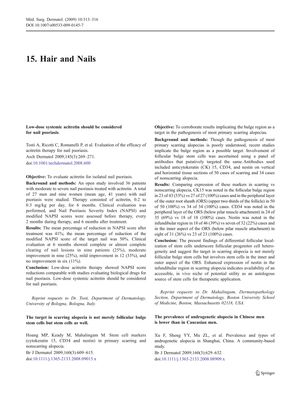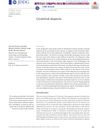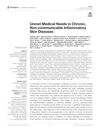Hair and Nails: Insights from 2009 Studies
July 2009
in “
Medical & surgical dermatology
”
acitretin Nail Psoriasis Severity Index stem cell-based therapies scarring alopecia androgenetic alopecia AGA hair shaft diameter alopecia areata CCCA human folliculoid microsphere assay EDA signaling androgenic alopecia central centrifugal cicatricial alopecia stem cell therapy hair shaft thickness hair follicle assay

TLDR Low-dose acitretin helps nail psoriasis, stem cells may treat scarring alopecia, Chinese men have lower baldness rates, lateral foldplasty is good for ingrown toenails, hair diameter helps diagnose female baldness, childhood trauma linked to alopecia areata, certain hair-weaving leads to scalp conditions in African American women, and new methods for hair research and understanding hair and sweat gland development were introduced.
In 2009, several studies provided new insights into hair and nail conditions. A study on 36 patients with nail psoriasis showed that low-dose systemic acitretin significantly reduced Nail Psoriasis Severity Index scores. Research involving 84 cases of alopecia highlighted the potential for stem cell-based therapies in treating scarring alopecia. A population-based study of 7,056 Chinese subjects found a lower prevalence of androgenetic alopecia (AGA) in Chinese men compared to Caucasian men, but similar to Korean men. Lateral foldplasty was shown to be an effective treatment for ingrown toenails in 32 patients. A study on 28 women with AGA suggested that diagnosis could be based on hair shaft diameter differences. A case-control study with 90 patients found a higher history of childhood trauma in those with alopecia areata. A survey linked certain hair-weaving practices with CCCA in African American women. Additionally, a new human folliculoid microsphere assay was introduced for hair research, and a mouse study on EDA signaling revealed its importance in hair and sweat gland development.


